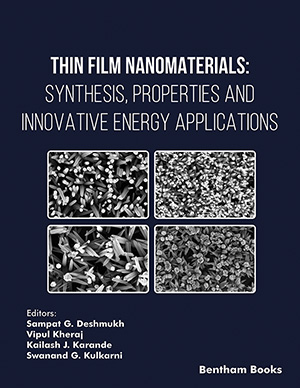
Abstract
Gene therapy is a promising approach for disease prevention and therapy. Efficient gene delivery is an important factor limiting gene delivery. Due to the poor stability of nucleotide molecules in vivo, they require an association with delivery systems to overcome extracellular and intracellular barriers and allow access to the site of action. In this review, we discuss the challenges currently encountered in the delivery of DNA and RNAi-based therapies using the most common cationic polymer assemblies including polylysines, chitosan, polyethylenimines, dendrimers, cyclodextrins and illustrate with examples how chemical modification of cationic assemblies may contribute to their successful application in the clinic.
Keywords: Cationic assemblies, cationic polymers, complexes, DNA delivery, gene delivery, RNA interference, siRNA delivery.
Pharmaceutical Nanotechnology
Title:Current Trends in the Use of Cationic Polymer Assemblies for siRNA and Plasmid DNA Delivery
Volume: 1 Issue: 3
Author(s): Gemma Navarro, Sara Movassaghian and Vladimir P. Torchilin
Affiliation:
Keywords: Cationic assemblies, cationic polymers, complexes, DNA delivery, gene delivery, RNA interference, siRNA delivery.
Abstract: Gene therapy is a promising approach for disease prevention and therapy. Efficient gene delivery is an important factor limiting gene delivery. Due to the poor stability of nucleotide molecules in vivo, they require an association with delivery systems to overcome extracellular and intracellular barriers and allow access to the site of action. In this review, we discuss the challenges currently encountered in the delivery of DNA and RNAi-based therapies using the most common cationic polymer assemblies including polylysines, chitosan, polyethylenimines, dendrimers, cyclodextrins and illustrate with examples how chemical modification of cationic assemblies may contribute to their successful application in the clinic.
Export Options
About this article
Cite this article as:
Navarro Gemma, Movassaghian Sara and Torchilin P. Vladimir, Current Trends in the Use of Cationic Polymer Assemblies for siRNA and Plasmid DNA Delivery, Pharmaceutical Nanotechnology 2013; 1 (3) . https://dx.doi.org/10.2174/22117385113019990003
| DOI https://dx.doi.org/10.2174/22117385113019990003 |
Print ISSN 2211-7385 |
| Publisher Name Bentham Science Publisher |
Online ISSN 2211-7393 |
Call for Papers in Thematic Issues
Polymeric nanocarriers in drug delivery
Polymeric nanocarriers play a crucial role in drug delivery due to their versatility, and unique properties for targeting and modifying drug release. Their ability to enhance therapeutic outcomes, reduce side effects, and enable the delivery of drugs in a more targeted and controlled manner made them popular in the last ...read more
 55
55
- Author Guidelines
- Graphical Abstracts
- Fabricating and Stating False Information
- Research Misconduct
- Post Publication Discussions and Corrections
- Publishing Ethics and Rectitude
- Increase Visibility of Your Article
- Archiving Policies
- Peer Review Workflow
- Order Your Article Before Print
- Promote Your Article
- Manuscript Transfer Facility
- Editorial Policies
- Allegations from Whistleblowers
Related Articles
-
In Vitro Anticancer Effects of Two New Potent Hydrazide Compounds on Leukemic Cells
Anti-Cancer Agents in Medicinal Chemistry Dexamethasone Reduces Cell Adhesion and Migration of T47D Breast Cancer Cell Line
Anti-Cancer Agents in Medicinal Chemistry Emerging Therapies Targeting Tumor Vasculature in Multiple Myeloma and other Hematologic and Solid Malignancies
Current Cancer Drug Targets Evaluation of Dendrimer Safety and Efficacy through Cell Line Studies
Current Drug Targets Purine Ionotropic (P2X) Receptors
Current Pharmaceutical Design Effect of miR-128 in DNA Damage of HL-60 Acute Myeloid Leukemia Cells
Current Pharmaceutical Biotechnology Preparation, Characterization, and In Vitro Release of Vinorelbine Tartrate (VLBT)- Loaded Folate-conjugated Recombination Human Serum Albumin (rHSA) Nanoparticles with Different Degree of Cross-linking
Current Nanoscience Histone Deacetylase Inhibitors: Recent Insights from Basic to Clinical Knowledge & Patenting of Anti-Cancer Actions
Recent Patents on Anti-Cancer Drug Discovery Intracellular Aβ and its Pathological Role in Alzheimer’s Disease: Lessons from Cellular to Animal Models
Current Alzheimer Research Computational Medicinal Chemistry for Rational Drug Design: Identification of Novel Chemical Structures with Potential Anti-Tuberculosis Activity
Current Topics in Medicinal Chemistry Biotransformation of Microcystins in Eukaryotic Cells - Possible Future Research Directions
Mini-Reviews in Medicinal Chemistry Clinical Pharmacology of Cyclophosphamide and Ifosfamide
Current Drug Therapy Targeting Cell Death and Survival Receptors in Hepatocellular Carcinoma
Anti-Cancer Agents in Medicinal Chemistry Small Molecules Targeting p53 to Improve Antitumor Therapy
Mini-Reviews in Medicinal Chemistry Novel Concepts in the Pathogenesis and Management of Pediatric Hypertension
Current Pediatric Reviews Prediction and Targeting of Interaction Interfaces in G-protein Coupled Receptor Oligomers
Current Topics in Medicinal Chemistry Novel Colchicine Derivatives and their Anti-cancer Activity
Current Topics in Medicinal Chemistry The cAMP-Dependent Protein Kinase Pathway as Therapeutic Target – Possibilities and Pitfalls
Current Topics in Medicinal Chemistry Protein Folding and Misfolding, Endoplasmic Reticulum Stress in Neurodegenerative Diseases: in Trace of Novel Drug Targets
Current Protein & Peptide Science Overview of PCTK3/CDK18: A Cyclin-Dependent Kinase Involved in Specific Functions in Post-Mitotic Cells
Current Medicinal Chemistry

























